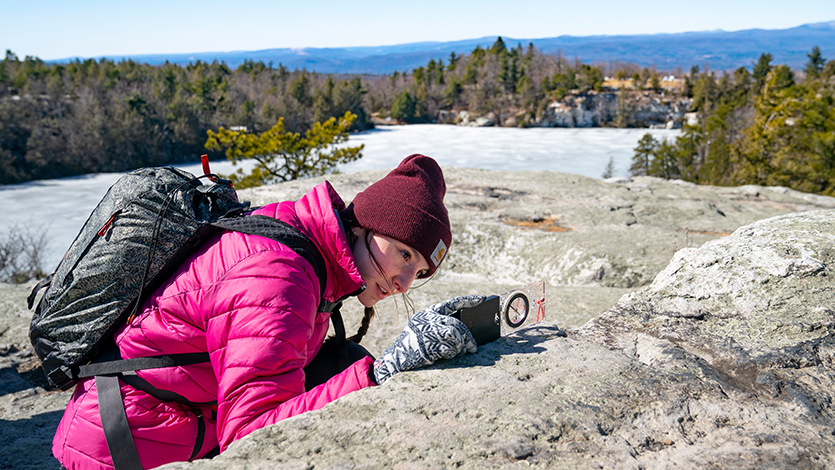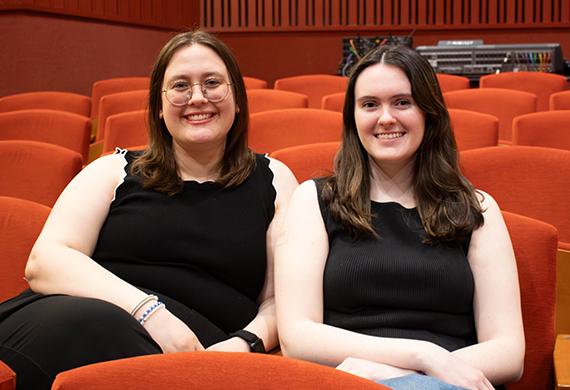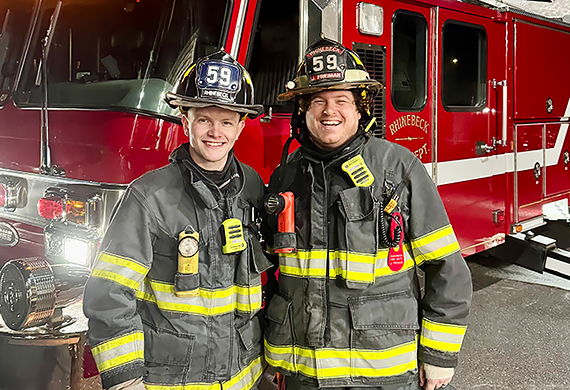Applying Earth Science in the Hudson Valley

Hands-on course focuses on experiential learning and field work
May 9, 2019—Throughout the spring semester, students in Marist’s newly redesigned geology course have been venturing out weekly to field sites across the Hudson Valley. Recently, their weekly field trip took them to Minnewaska State Park in the Shawangunk Mountains.
Here, students worked to improve their skills in data collection and environmental analysis, guided by Assistant Professor of Environmental Science Zion Klos, a new member of Marist’s Department of Environmental Science and Policy. Through these field trips, students collect data to understand the geologic history of the region and how it shapes the current environments around us today. With this type of geologic knowledge, it is possible to better manage and conserve local environmental resources, such as soil and water, which help sustain local communities and economies. “In order for students to solve many of the major environmental problems influencing the region today, you need to also understand how the previous millions of years of geologic events control the look and function of our present-day landscapes,” says Klos. “We’re fortunate to be situated in the Hudson Valley, which has an abundance of open space for these kinds of explorations.”
As students investigate these concepts firsthand in the field, they also build skills in spatial data acquisition, quantitative analysis, project management, and problem-based thinking. For the final project within the course, students are practicing a consultancy-style investigation for a community partner to help map how geologic controls influence the distribution of resources and threats in the shallow subsurface of a local area set for development. In framing this final project for the students, Klos says, “by knowing how to investigate the subsurface, and communicating your findings effectively, you can start to understand which parts of our landscapes may be best suited for which purpose—be it preservation of our ecosystems, responsible use of needed natural resources, or new construction that will be sustainable into a changing future.”

Assistant Professor Dr. Zion Klos with his class at Minnewaska State Park



